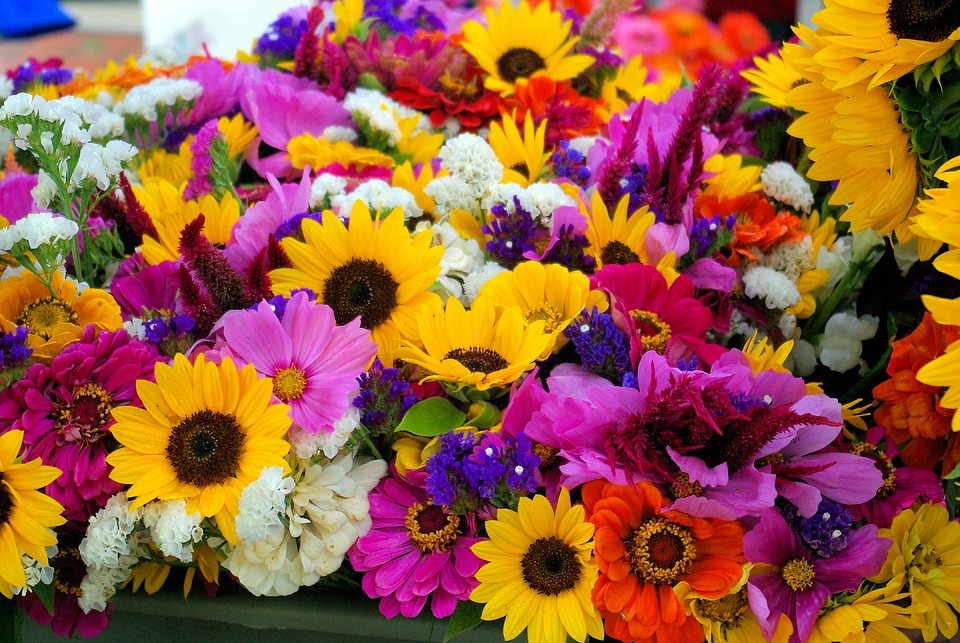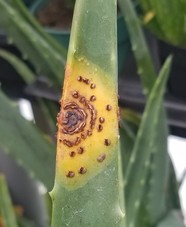Horticulture
In this issue:
A group of Maine cut flower growers is conducting a survey to assess the most pressing needs among fellow cut flower farmers. Survey responses will remain confidential. Responding to the survey takes about 5-10 minutes, and may help develop new marketing strategies that will help all Maine cut flower producers. University of Maine Cooperative Extension (UMCE) and Maine Department of Agriculture, Conservation and Forestry (DACF) staff are assisting with this project. Survey responses will be collected until Sunday, February 21.
Take the cut flower producers survey
We are also interested in hearing from local florists and designers. As with the producer survey, responses will remain confidential and the survey should take 5-10 minutes to complete. Please submit responses by Sunday, February 21.
Take the florist and designers survey
Join DACF and UMCE staff and other cut flower producers on February 24 from 6:00 to 8:00 pm for a discussion about these survey results on expanding wholesale flower marketing opportunities for local flower farmers. This session is open to all Maine Producers.
Sign up for the February 24 session for Maine flower producers

There are several departmental rules that affect horticultural businesses that the Horticulture Program will be reviewing, writing or updating in 2021. The rulemaking process includes time for stakeholders (that's you!) to comment and provide input. Keep your eyes on your email to know when it is your time to participate. The rules that we will be working on this year include:
- Emerald ash borer (EAB) - The federal deregulation of emerald ash borer that happened in January puts the regulation of EAB into the hands of the states. Maine's current EAB quarantine addresses movement of ash within the state but does not address the importation of ash from other states. The Maine Forest Service has issued an Emergency Order that temporarily restricts the movement of ash, but the longer-term solution is to amend the EAB quarantine to add requirements for importing ash for planting, hardwood firewood and other potentially infested ash materials. More information on EAB in Maine
- Invasive terrestrial plants - Written into the invasive terrestrial plant rule is a requirement to review the rule and list of plants prohibited from sale every five years. This mandated review is due this year. We we have assembled a group of stakeholders, including nursery people, that will help conduct the review. If you have suggestions for plants to include on the prohibited plant list or cultivars you would like to exempt, find the paperwork on our website.
- Hemp grower licensing - Maine's Hemp Licensing Program will continue to operate under the state's existing rules for 2021. However, Maine statute and departmental rules will need to be changed in order for a USDA-approved licensing program to be up and running by January 1, 2022. To stay informed about the legislative work taking place this year for hemp licensing, sign up for hemp updates.
In the legislature there are several bills we are keeping our eyes on. Bills that might interest the horticulture industry include:
- LD 33 "An Act to Improve the Laws Governing Hemp by Bringing Them into Compliance with Federal Law"
- LD 155 "Resolve, Directing the Board of Pesticides Control to Prohibit the Use of Certain Neonicotinoids for Outdoor Residential Use"
- LD 188 "An Act Regarding the Transportation of Products in the Forest Products Industry"
- LD 316 "An Act to Prohibit the Use of Chlorpyrifos"
Find the text of these bills and others that may interest you and follow their progress through the legislative process on the Maine State Legislature's Website.
National Invasive Species Awareness Week (NISAW) is an annual, international event to raise awareness about invasive species, the threats they pose and what can be done to prevent their spread. Nursery and garden center staff play important frontline roles in curbing the spread of invasive species, from preventing hitchhiking weeds from being sold in potted material to adhering to the do not sell invasive plant list. Consider attending a virtual webinar during NISAW week. Topics will focus on a variety of invasive species initiatives, including policy updates, funding needs, and prevention and management. All webinars start at 2 PM Eastern.

The Maine Invasive Species Network (MISN) annual meeting will be held virtually from 9 am to 11 am on February 23 and 24. The meeting will feature presentations on a variety of invasive species including agricultural, forest, aquatic plants, terrestrial plants and marine species. Up to four pesticide licensing recertification credits are available and forester license credits are pending. Pre-registration is required, but the meeting is free to attend. Full Agenda
MISN brings together professionals and amateurs who are interested in understanding and managing invasive species in Maine. Learn more about MISN

During an inspection this winter, a rust fungus was found on aloe plants at a greenhouse in Maine. This was not a pest Horticulture Program staff were familiar with so a sample was sent to the University of Maine Cooperative Extension Insect and Disease Diagnostic lab. The disease was identified to be in either the genus Puccinia or Uromyces, but a molecular analysis is required to determine the species. There is only one other report of aloe rust in the US from California.
The source of the infection is a bit of a mystery. The plants were at the greenhouse for several seasons and continually repotted as they grew. This was the first time symptoms were noticed. The business opted to destroy the symptomatic plants, yet many of those that were left started developing pustules within a month. Other varieties of aloe growing next to the infected plants have shown no symptoms but are being watched carefully and preventative fungicides may be applied.
While not much is known about the specific biology of this disease on aloe, there are many other species-host relationships we do know about for these genera. Daylily rust, chrysanthemum white rust, and wheat stem rusts are in the genus Puccinia. Uromyces rusts are often found on vegetables such as corn, beans and asparagus. In general, these rusts need wet, humid conditions and cool temperatures to develop, release spores and start new infections. Overhead watering can easily splash spores from one plant to another as can hands, tools and clothing.
Symptoms observed on aloe included concentric circles of raised pustules within sunken yellow areas on leaves giving the infection an eye-catching bullseye appearance. Pustules begin as tan colored bubbles that eventually open and release rusty brown spores and then dry up and turn a darker colored brown. If you see these symptoms on aloe plants, please contact the Horticulture Program so we can learn more about the movement of this disease.
|
|